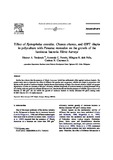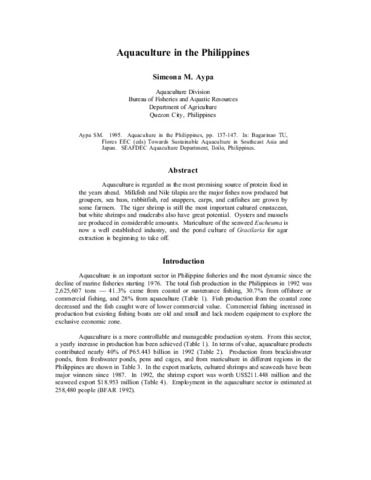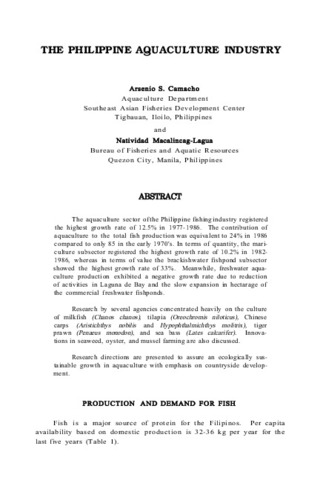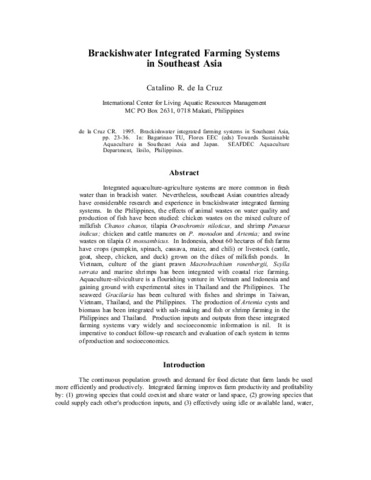Effect of Epinephelus coioides, Chanos chanos, and GIFT tilapia in polyculture with Penaeus monodon on the growth of the luminous bacteria Vibrio harveyi

View/Open
Date
2006Page views
470Metadata
Show full item recordCited times in Scopus
53 readers on Mendeley
Share
Abstract
Studies have shown that the presence of Tilapia hornorum hybrid has antibacterial effect against luminous bacteria. The present study aims to determine the effect of different fish species such as grouper, milkfish and tilapia in polyculture with shrimp on the growth of luminous bacteria. Results showed that stocking of tilapia Oreochromis niloticus hybrid and grouper Epinephelus coioides at a biomass of 500 g/m3 efficiently inhibited the growth of luminous bacteria in shrimp (biomass = 80 g/m3) rearing water and positively affected shrimp survival. Results also showed that the presence of milkfish Chanos chanos at a biomass of 500 g/m3 did not inhibit the growth of luminous bacteria in shrimp (biomass = 80 g/m3) rearing water.
Suggested Citation
Tendencia, E., Fermin, A. C., dela Peña, M. R., & Choresca, C. H., Jr. (2006). Effect of Epinephelus coioides, Chanos chanos, and GIFT tilapia in polyculture with Penaeus monodon on the growth of the luminous bacteria Vibrio harveyi. Aquaculture , 253(1–4), 48-56. https://doi.org/10.1016/j.aquaculture.2005.06.028
Subject
fish culture; hybrid culture; polyculture (aquaculture); shrimp culture; antibiotics; disease control; aquaculture techniques; bacterial diseases; growth; stocking (organisms); brackishwater fishes; luminous organisms; biomass; hybrids; survival; Epinephelus coioides; Chanos chanos; Oreochromis niloticus; Penaeus monodon; milkfish; Giant tiger prawn; GIFT tilapia; groupers; prawns and shrimps
Taxonomic term
Collections
- AQD Journal Articles [1248]
Related items
Showing items related by title, author, creator and subject.
-
Aquaculture in the Philippines
Aypa, Simeona M. (Aquaculture Department, Southeast Asian Fisheries Development Center, 1995)Aquaculture is regarded as the most promising source of protein food in the years ahead. Milkfish and Nile tilapia are the major fishes now produced but groupers, sea bass, rabbitfish, red snappers, carps, and catfishes ... -
The Philippine aquaculture industry
Camacho, Arsenio S.; Macalincag-Lagua, Natividad (Aquaculture Department, Southeast Asian Fisheries Development Center, 1988)The aquaculture sector of the Philippine fishing industry registered the highest growth rate of 12.5% in 1977-1986. The contribution of aquaculture to the total fish production was equivalent to 24% in 1986 compared to ... -
Brackishwater integrated farming systems in Southeast Asia
De la Cruz, Catalino R. (Aquaculture Department, Southeast Asian Fisheries Development Center, 1995)Integrated aquaculture-agriculture systems are more common in fresh water than in brackish water. Nevertheless, southeast Asian countries already have considerable research and experience in brackishwater integrated farming ...



